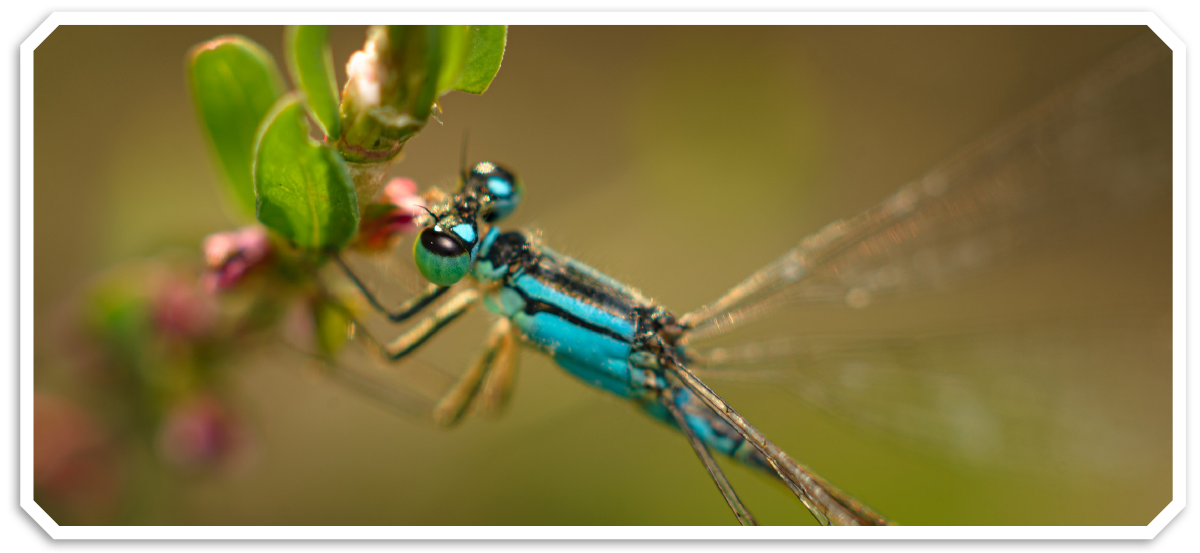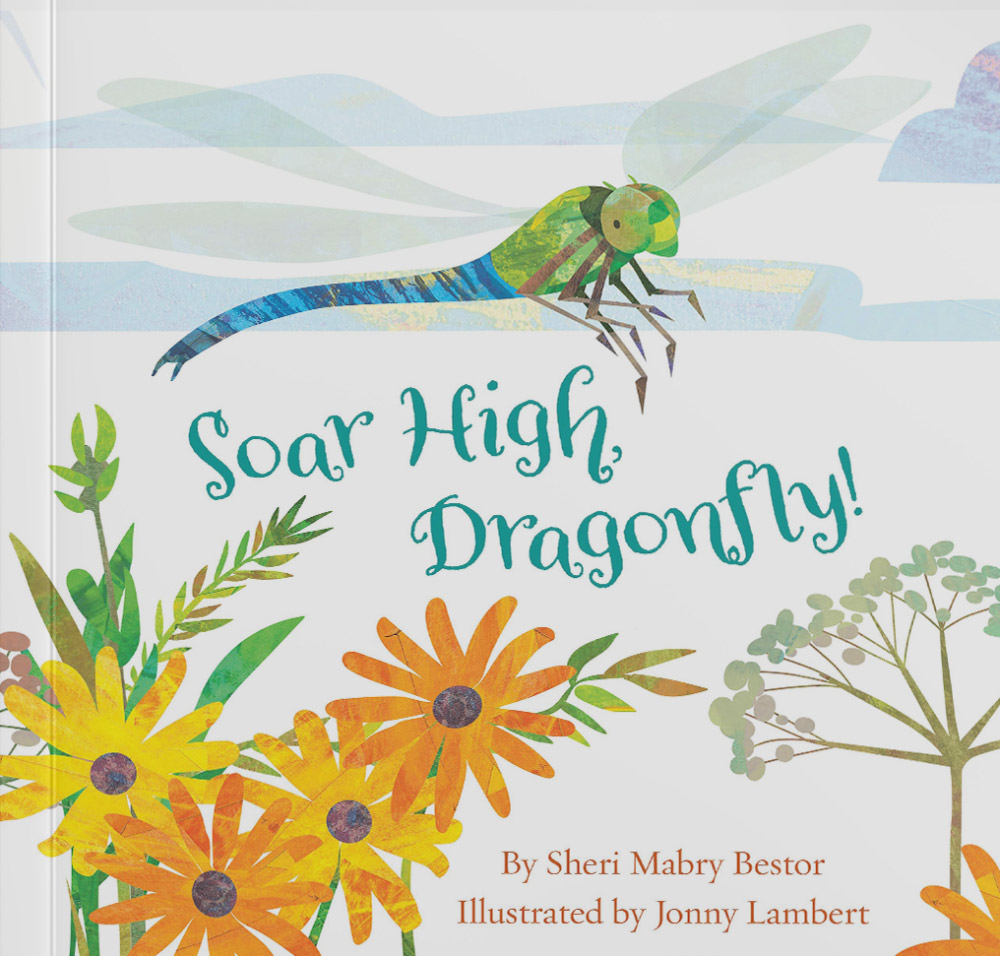hile visiting the library, I discovered a treasure, Soar High Dragonfly! by Sheri Mabry Bestor (Sleeping Bear Press, 2019). This stunningly beautiful, age-appropriate scientific presentation of the dragonfly life cycle provides a captivating glimpse into the life of one of creation’s most fascinating insects. Readers are gently carried through the life cycle, migratory and feeding habits, and habitat of the green darner dragonfly. Not only is the content presented at a level intriguing to elementary learners, but the variation in font size and color invites the youngest emerging readers to “give it a try.” In addition, children interested in digging deeper into the science of dragonflies are provided with a smaller informational font—which can easily be omitted if a parent is reading to littles—along the top and bottom. This picture book is brilliantly presented for multiple levels and interests.
The cover invited me to choose the book. I was immediately drawn to the soft, yet radiantly colorful, collage-style illustrations. Illustrator Jonny Lambert created his work using stencils with gouache, detailed and highlighted by colored pencil. His selection of color offers a calming effect to the reading experience, like the water environment the author depicts in the text. This book is masterfully written and illustrated, introducing curious minds to the world of the dragonfly.
Most people are not aware that some species of dragonflies migrate. Migrate means to travel long distances, generally to find food and warmer places to raise young. Dragonflies in North America move south July through October. They winter in the south and then migrate back north in early spring. Find a printable map of North America. Label the edges north, south, east, and west. Draw arrows showing movement from the north to south. Birds, butterflies, sea turtles, even humpback whales, wildebeests, and wolves migrate, too.
The book opens in spring when birds are building nests. Review and recite the seasons in order: winter, spring, summer, and fall.
Verbs are action words. Verbs are hiding in the text of this book. Reread the book slowly, listening for the action words: sprout, build, hum, lay, lands, perch, tuck, hatch, and seep. Act out some of the verbs in the story. If verbs are a new concept, it may be helpful to read the first two pages aloud and point out the verbs, together, before going on to find the other verbs.
Onomatopoeia is a word that sounds like the noise being made. Onomatopoeias are used to make a story more interesting, a way to make the story come alive. In this book the onomatopoeias are in large, colored font. Make a list of the onomatopoeias in the book; for example, pop, drip, drop, and gulp. Take turns thinking of other onomatopoeias: hum, tick, splash, bang, boom, and crash.
Dragonflies have uniquely created bodies. Study the dragonfly’s anatomy. Dragonflies have a hard exoskeleton and three main body parts: head, thorax, and abdomen. They also have six segmented legs and two pairs of transparent wings—forewings and hindwings. The green darner dragonfly is especially beautiful as it has a green thorax and blue abdomen. Dragonflies can be one to four inches long.
Once home from your outdoor learning, make a clothespin dragonfly. Paint the clothespin with sparkle paint or coat with glitter—blue and green to mimic the green darner dragonfly. Cut four wings out of a five-inch piece of white tissue paper. Clip inside the clothespin. Imitate the dragonfly’s flight patterns. Soar high, dragonfly!

As spring and summer unfold, there are many opportunities for children to learn in the outdoors. Be bold. Change up learning, embrace the warm breezes, and enjoy God’s creation. Dragonflies are just one of His magnificent creations.

